Is ‘Information Fatigue Syndrome’ Undermining Our Cognitive Capacity
AND Making us Miserable?
The irony of sharing this here doesn’t escape me.
Another platform to which I’m adding more information, albeit where a significantly higher quality of information exists, generally … but still, more information.
We can’t escape the fact that we now live in a knowledge economy, so information is our commodity.
However, does too much information impact our capacity to use our brains effectively?
David Lewis, a British psychologist, coined the term ‘Information Fatigue Syndrome’ nearly two decades ago, in a report funded by Reuters based on feedback from 1,300 managers in Britain, the USA, Australia, Singapore and Hong Kong.
Paul Waddington, one of the researchers stated that:
‘One in four people admit to suffering ill health as a result of the amount of information they now handle, despite agreeing that they need high levels of information to perform effectively.’ (Bodil, J, 1996.)
Nearly two decades later we speak about ‘Information Stress’ or ‘Information Overwhelm,’ or ‘Information Overload:’
‘ … Information overload refers to the experience of feeling burdened by large amounts of information received at a rate too high to be processed efficiently or used effectively …’ (Misra, S and Stokols, D, 2012.)
We also use the term, ‘infobesity,’ to describe the ‘unrelenting exposure to new information,’ and in more detail:
‘Infobesity is characterized by information overload whereby firms and decision makers collect more information than they need, or they can efficiently use.’ (Malik, O, et al, 2022.)
It’s not that information can’t be useful, for organisations and for us personally.
However, too much information may negatively impact our work and our life generally.
‘ … Cyber-based information overload arises from the strain experienced when encountering large volumes of electronic messages, keeping track of multiple email accounts, and receiving too many cell phone calls, voice messages, and text messages…’ (Misra, S and Stokols, D, 2012.)
This was already an area of interest in 2012, what about now?
How much information do we NOW have available?
It was estimated two decades ago that the amount of printed information doubled every five years, while today some experts suggest all knowledge is doubling every 12 hours. (Schilling, DR, 2013.)
From an historical perspective, in 1900 human knowledge doubled every 100 years, while by 1945 the rate was up to every 25 years. (Buckminster Fuller, ‘The Knowledge Doubling Curve,’ 1982.)
The current estimates of information generated via social media show 500 million tweets per day, 4 million giga bytes of Facebook data, 65 billion WhatsApp messages, and 720 000 hours of new content shared daily via YouTube. (Vopson, MM, 2021.)
In 2022 it was estimated that 333 billion emails were sent and received, and 41% of opens occurred on smart phones and tablets. It’s estimated that 34% of Americans check their emails throughout the day, with some users checking emails up to 20 times/day, while people report that they spend about 23% of their work time on email. (PPM Express, 2022.)
We must acknowledge that we’re also being bombarded with information from social media platforms, and current estimates suggest the average social media user spends 143 minutes per day on such platforms. (Statista, 2024.)
We used to see information as a valuable resource, but Lewis states that:
‘Uncontrolled, unorganized, and excessive information can hinder learning, decision making, and well-being.’ (Jones, B, 1997.)
Leaders must acknowledge that optimal decision-making cannot occur in an environment where individuals feel overwhelmed by too much information, regardless of the source.
And personally, we need to acknowledge that more information doesn’t make us more effective at anything and can negatively impact our physical and mental health.
And although it’s for a future post, we also know that:
‘ … the half-life of knowledge is decreasing at an accelerating rate, so what we’re exposed to has an expiration date …’ (Carrol, J, 2023.)
We’re left with a feeling of accelerating knowledge and the fear of missing out (FOMO) on what we may need to know.
What are we DOING with the information we have available?
Recently, in a study that examined how nearly 5,000 employees are using the data available to them, the results were sobering:
• They struggle to find the information to do their work and more than 1/3rd missed important updates due to information overload.
• 1/3rd said they made incorrect decisions due to a lack of awareness over key information.
• 45% said they received irrelevant notifications.
• 47% struggle to find the information they need to effectively perform at work.
• Compared to 2019, when an average of six applications were used at work, 11 is now the norm, with 5% of workers using more than 26 applications. (Gartner, 2023 Survey.)
Another recent study resulted in this data:
• Large organizations (20K+ employees) use 367 software apps and systems, on average - leading to silos and blind spots among teams.
• 30% of respondents’ weeks are spent trying to find the right data and information – sapping 2.4 hours daily.
• 80% of respondents view reducing data and information silos as a critical or high priority.
• The #1 reason that employees disengage is that it’s too hard to find the information they need to do their job. (Forrester, 2022 Survey.)
In essence, we have significantly more information today than two decades ago but aren't using it effectively.
WHY does ‘information overload’ cause distress?
Anything that leaves us feeling overwhelmed, and ‘time poor,’ or that we’ll be left behind (FOMO) if we don’t know something, leaves us feeling a sense of negative stress, also known as dis-stress. This is the opposite of good stress, also known as eu-stress.
In a state of dis-stress, our sympathetic nervous system (SNS) steps in, which leads to an elevated heart rate, increased blood pressure, and digestive challenges.
One of the managers in the nearly two decades old report said:
‘I would get panic attacks, with palpitations and a knot in my stomach because of the deadlines … I had information all around me and I didn’t know what to do with it all … I look back on my job and I see myself drowning under the information.’
She suffered depression, chronic exhaustion, an inability to sleep, and pains in her joints and muscles. Finally, under medical advice, she quit.
One of the reasons these physical responses occur is because of near-constant attention shifting.
Professor Gloria Marks, professor of informatics at University of California, explained a lot about human attention span in her 2023 book ‘Attention Span: A Groundbreaking Way to Restore Balance, Happiness and Productivity.’
Mark’s explains that shifting attention too often to attend to different information, has three main negative effects:
1. People make more errors when they do attention shifting;
2. It takes longer to do something, as we have to reorient to every new task every time we shift attention;
3. Our stress increases - when people are working on multiple tasks and they must shift their attention, their blood pressure rises, which is a sign that our SNS has been switched on.
We also experience muscular aches and pains from hunching over our computers or smart phones to read/scan more, and because our body doesn’t relax enough via our rest and digest, anti-stress, parasympathetic nervous system. (PNS). (Demissie, B, et al, 2024.)
What about our eyes? When our SNS is on, our vision narrows, and we don’t blink. (Mukamal, R, 2023.) We can’t consciously stop this from happening any more than we could do so if a tiger was chasing us.
And high stress levels are linked to problems with our vision, including glaucoma and optic neuropathy. (Savel, BA, et al, 2018.)
What’s happening at a deeper, COGNITIVE level?
When our SNS is ‘on’ we find it difficult to concentrate and make good decisions because our brain is telling our body to focus on physical survival.
When we have too much information at hand it can be more difficult to make decisions as we have more factors to consider. In some instances, this is of benefit to the decision-making process, but may not always be the case.
‘ … a consistent feature of the various scientific definitions of information overload is that the amount of information is initially related to better performance or better decisions but that, above a certain amount of information, the effect changes, and the amount of information leads to worse outcomes (an inverted U-shaped relationship) …’ (Arnold M, et al, 2023.)
Not knowing what the key information is, as in the Gartner study mentioned above, can also lead to poor decision-making.
‘ … an excessive amount of information that the receiver can no longer process efficiently without distraction, stress, increased errors, or other costs that reduce the efficient use of the information…’ (Arnold M, et al, 2023.)
And
‘ … the amount of information exceeds the processing capacity of the recipient…’ (Arnold M, et al, 2023.)
Barry Schwartz’s famous TED talk, ‘The Paradox of Choice,’ which has had nearly 20 million views, obviously hit on a nerve. He revealed that having too many choices can lead to increased anxiety, indecision, ‘analysis paralysis,’ and dissatisfaction with what we end up deciding to purchase or do.
Our shortened attention span is due to too much information being available, and our desire to consume it, which naturally leads to us seldom spending time on deep, focused attention, rather skipping ahead to new information.
Marks’s research shows that our attention span is down to about 47 seconds on screens, down from about 2.5 minutes in 2003/4. (Marks, G, 2023.)
‘ … Another important finding was that individuals experiencing higher levels of cyber-based overload devoted significantly less time to contemplative activities as compared with those reporting lower levels of cyber-based over-load …’ (Misra, S and Stokols, D, 2012.)
Basically, the brain is in a constant state of distraction, which over time, becomes a habit, undermining the brains capacity for deep focus and concentration.
Our old ‘frenemy,’ dopamine, PLUS deeper still …
You’re likely very familiar with the increase in dopamine levels that accompanies our interaction with smart technology.
The inherent, natural drive we have to experience anything that drives the increase of this neurotransmitter drives our increased exposure to information too. (Lembke, A, 2021.)
It isn’t surprising that there’s a relationship between electronic media use and sleep, although the researchers didn’t examine the sense of ‘information overwhelm’ in relation to these factors.
However, sleep challenges lead to further cognitive deficits via other mechanisms. (Han, X, et al, 2024.)
Consider too that every decision to either engage or not, with any information, uses neural energy, as does selective attention, along with decisions about what to do with the information gathered. (Christie, ST, Schrater P, 2015.)
The most sophisticated part of our brain, the pre-frontal cortex (PFC), is the major player in decision-making. Among many other complex activities, it must:
sift through information,
examine, and weigh this information against what we’ve encountered in the past,
via our memories, skills, and knowledge,
assess the goals and immediate objectives of our actions in conjunction with our working memory,
and assess the current environment,
and attempt to plan for,
or predict the future, based on all this information.
It’s also actively juggling data in our working memory, prioritising, shifting between tasks and thoughts to ensure appropriate behaviour is exhibited and emotions are modulated.
These are complex, sophisticated cognitive phenomena, and an ongoing challenge with increasing amounts of, and today, often increasingly complex, information. (Miller, EK & Cohen, JD, 2001.)
The complexity that underpins PFC activity requires extensive neural energy – it is the most energy demanding and nutritionally expensive part of the brain.
Although the brain uses 25%+ of the total glucose we generate from the carbohydrates we consume, the PFC, which is less than 10% of total brain volume, uses upwards of 25% of that amount.
And then there’s … ‘Decision Fatigue!’
Many decisions are made using new information, so there is a lack of automatic, habitual neural activity, which explains its high energy demand.
In other words, none of the sophisticated activities mentioned above can rely on habitual responses, which naturally save energy. (Lenni, P, 2003; Tomasi, D, et al, 2013.)
Due to its increased demand for energy, the PFC will be unable to function optimally when its supply of energy is curtailed. This can occur due to both a lack of energy via glucose depletion and/or nutrient deficiencies that impact energy synthesis and/or neurotransmitter activity. (Orquin JL & Kurzban R, 2016; McCabe, D, 2016)
And more information simply makes its job harder – and increases its requirements for energy and nutrients.
Research shows that ‘decision fatigue’ results in either no decision being made, or a habitual, or judged to be ‘safe’ decision being made. (Danziger S, et al, 2011.)
This occurs because, as the PFC gets tired, it becomes a ‘cognitive miser.’ It will start evaluating factors related to the decision it needs to make based on only one dimension, versus a few, concurrently.
NOTE: Although the researchers that originally examined ‘decision fatigue’ were criticised for the limitations in their research and used the words ‘willpower/self-discipline/control’ to describe the mental state that declined during the day, which introduced a seemingly moral dimension, they were correct in their intuitive understanding that the part of the brain most active in decision-making (the PFC) does run out of neural energy.
Take shopping at the end of a long day, when cognitively tired, as an example. If you’ve ever picked up a candy bar at the checkout – something you’d ordinarily not do – you’ve experienced this effect yourself.
It is for this reason that we may be better served to do our most energy-intensive, analysis-focused thinking early in the day before our neural energy runs out, and leave rote, simple cognitive tasks for later in the day when the same amount of neural energy isn’t required. And avoid shopping at the end of the day!
Chronic stress alone, for different reasons, impacts PFC function, so in combination with ‘information overwhelm’ the brains capacity to make good decisions is compromised.
And, when we're exposed to too much information we have less time to think deeply about the decisions we make, so increase the risk of making the wrong decision.
What about our mood in relation to too much information? In relation to social media specifically,
‘ … Information overload was significantly related to depressive symptoms over time …’ (Matthes, J et al, 2020.)
And, is all this information making us more intelligent?
Read an article I wrote about intelligence by clicking the link above.
So, what are we meant to DO?
From a personal perspective, there are several simple to action strategies that can reduce the sense of ‘information overwhelm:’
But first, let’s keep some wisdom in mind.
Motivation is defined as:
‘ … the reason or reasons one has for acting or behaving in a particular way …’
While discipline is defined as:
‘ … the practice of training people to obey rules or a code of behaviour …’
We need to keep on motivating ourselves to do a specific thing (or not do it).
Whereas, discipline goes deeper because once we establish the reason AND rules to continue (or stop) a specific thought/behaviour we don’t have to keep on motivating ourselves.
It’s like brushing our teeth – we don’t have to motivate ourselves to do so each day – we just do it because we’ve established a pattern, a routine, a system.
Keep this in mind while following these ten pointers to avoid a sense of ‘information overwhelm’ from smart devices and from other ways of gaining information, like TV:
Accept that unless you make a decision to limit your exposure to the unending and increasing amounts of information you will continue to feel overwhelmed and will experience stress-induced mental and physical symptoms.
Discipline yourself to turn off your phone at designated times, and watch TV wisely, which includes limiting the news.
Have ‘phone-free’ zones in your home, like bathrooms and dining-rooms.
Try a ‘digital-free’ day once a week, over the weekend, or over your vacation. According to research it takes about 3 days for our senses to recalibrate and stop needing the dopamine ‘hit.’
Unsubscribe to emails that serve no purpose or automate their storage to a safe place for (possible) future reference.
Work away from your computer – and phone – for regular periods during the day and/or week. This naturally limits your exposure to new information.
Search for information online using one search engine and avoid going down rabbit holes where you’re faced with more information.
Feed your brain optimally to ensure its functioning optimally which supports the inhibitory capacity that you need to activate to stop behaviour.
Stop second-guessing yourself once you’ve made a decision - once you’ve made a decision on a particular issue, about which you purposefully limited your choices, accept and embrace your choice.
Delegate information gathering to a few people involved in a project so that no one person is carrying the whole information gathering load.
In conclusion, we can use our brain to consciously manage its capacity and output, thereby maximising its efficiency.
This impacts our cognitive capacity and mood, personally, and can impact the creativity, innovation and productivity of the businesses we work in and lead.
When we’re inundated with information, which naturally leads to stress levels increasing, our brain is compromised and it’s challenging to make good decisions.
When we don’t have enough neural resources to make good decisions because we make too many trivial ones we will end up making bad decisions about important issues!
As David Lewis said nearly two decades ago, which is certainly more relevant today vs then, ‘Knowledge is power, but information isn’t,’ while William James said, ‘Wisdom is the art of knowing what to overlook.’
References
Arnold M, Goldschmitt M, Rigotti T. (2023) Dealing with information overload: a comprehensive review. Front Psychol;14:1122200.
Arnsten AFT. (2009) Stress signalling pathways that impair prefrontal cortex structure and function. Nat Rev Neurosci; 10960:410-422.
Christie ST, Schrater P. (2015) Cognitive cost as dynamic allocation of energetic resources. Front Neurosci;9:289.
Danziger S, Levav J, Avnaim-Pesso L. (2011) Extraneous factors in judicial decisions. Proceedings of the National Academy of Sciences;108(17):6889-92.
Demissie B, Bayih ET, Demmelash AA. (2024) A systematic review of work-related musculoskeletal disorders and risk factors among computer users. Heliyon;10(3):e25075.
Forrestor research results: https://www.airtable.com/lp/resources/reports/crisis-of-the-fractured-organization.
Gailliot MT, Baumeister RF. (2007) The physiology of willpower: linking blood glucose to self-control. Pers Soc Psychol Rev;11(4):303-27.
Gartner research results: https://www.gartner.com/en/newsroom/press-releases/2023-05-10-gartner-survey-reveals-47-percent-of-digital-workers-struggle-to-find-the-information-needed-to-effectively-perform-their-jobs (Cited 12 August 2024.)
Gonen-Yaacovi G, et al. (2013) Rostral and caudal prefrontal contribution to creativity: a meta-analysis of functional imaging data. Frontiers in Human Neuroscience; 7(465).
Han X, Zhou E, Liu D. (2024) Electronic Media Use and Sleep Quality: Updated Systematic Review and Meta-Analysis. J Med Internet Res;26:e48356.
Holton, A & Chyi, H. (2012) News and the Overloaded Consumer: Factors Influencing Information Overload Among News Consumers. Cyberpsychology, Behavior, and Social Networking; 15(11): 619-624.
Jones B. (1997) Dying for information? Management Review; New York Vol. 86, Iss. 7, 9; (Article in which David Lewis is quoted)
Lembke A (2021) Dopamine Nation: Finding Balance in the Age of Indulgence. Dutton.
Lenni P. (2003) The cost of cortical computation. Curr Biol; 13(6): 493-7.
Marks G. (2023) Attention Span: A Groundbreaking Way to Restore Balance, Happiness and Productivity. Hanover Square Press: Canada.
Matthes J, Karsay K, Schmuck, D & Stevic A. (2020). "Too much to handle": Impact of mobile social networking sites on information overload, depressive symptoms, and well-being. Comput. Hum. Behav, 105, 106217.
McCabe, D (2016) Feed Your Brain: 7 Steps to a Lighter, Brighter You! Exisle Publishing: Sydney.
Miller, EK & Cohen, JD. (2001). An Integrative Theory of Prefrontal Cortex Function. Annual Review of Neuroscience, 24, 167-202.
Misra, S & Stokols, D. (2012) Psychological and Health Outcomes of Perceived Information Overload. Environment and Behavior, 44(6), 737–759.
Mukamal, R (2023) https://www.aao.org/eye-health/tips-prevention/anxiety-stress-dry-eye-glaucoma-iop
Orquin JL, Kurzban R. (2016) A meta-analysis of blood glucose effects on human decision making. Psychol Bull;142(5):546-67.
Sabel BA, Wang J, Cárdenas-Morales L, Faiq M, Heim C. (2018) Mental stress as consequence and cause of vision loss: the dawn of psychosomatic ophthalmology for preventive and personalized medicine. EPMA J;9(2):133-160.
Schilling DR. (2013) “Knowledge Doubling Every 12 Months, Soon to be Every 12 Hours.” Accessed 10 February 2020. http://www.industrytap.com/knowledge-doubling-every-12-months-soon-to-be-every-12-hours/3950
Tomasi D, Wang GJ, Volkow ND. (2013) Energetic cost of brain functional connectivity. Proceedings of the National Academy of Sciences, USA;110(33):13642-7.
Vartanian O, et al. (2020) The Creative Brain Under Stress: Considerations for Performance in Extreme Environments. Front Psychol; 11: 585969.
Vopson MM (2021) https://theconversation.com/the-worlds-data-explained-how-much-were-producing-and-where-its-all-stored-159964
White MH and Dorman SM. (2000) Confronting Information Overload. Medicine. Journal of School Health; 70: 160.
https://theconversation.com/the-worlds-data-explained-how-much-were-producing-and-where-its-all-stored-159964 (Cited 22 April 2022.)
https://quod.lib.umich.edu/j/jep/3336451.0006.204?view=text;rgn=main (Cited 20 April 2022.)
https://lodestarsolutions.com/keeping-up-with-the-surge-of-information-and-human-knowledge/ (Cited 19 April 2022.)
https://ppm.express/blog/checking-emails/ (Cited 22 September 2024.)
https://www.statista.com/statistics/433871/daily-social-media-usage-worldwide/ (Cited 22 September 2024.)
https://www.ted.com/talks/barry_schwartz_the_paradox_of_choice?subtitle=en (Cited 22 September 2024.)
https://jimcarroll.com/2022/12/23-trends-for-2023-8-knowledge-velocity/ (Cited 22 September 2024.)
https://www.ted.com/speakers/barry_schwartz (Cited 20 September 2024.)

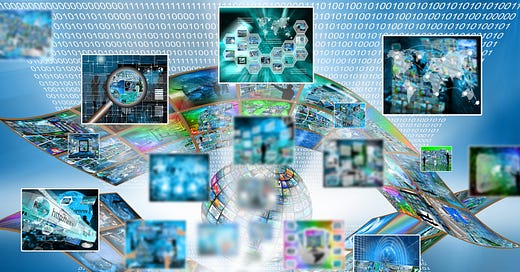



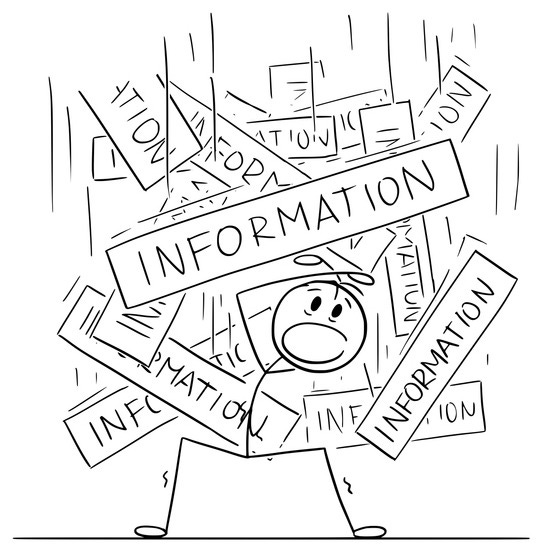

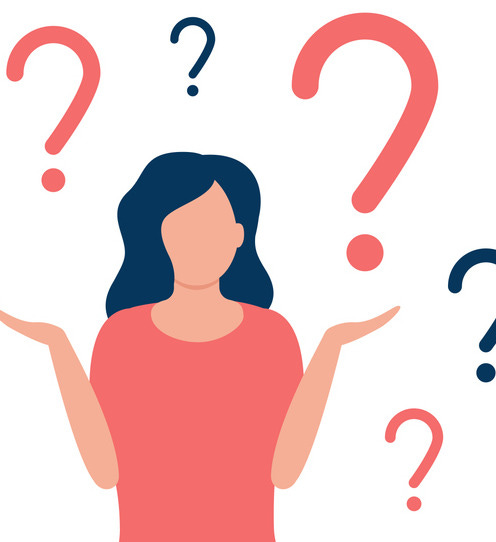
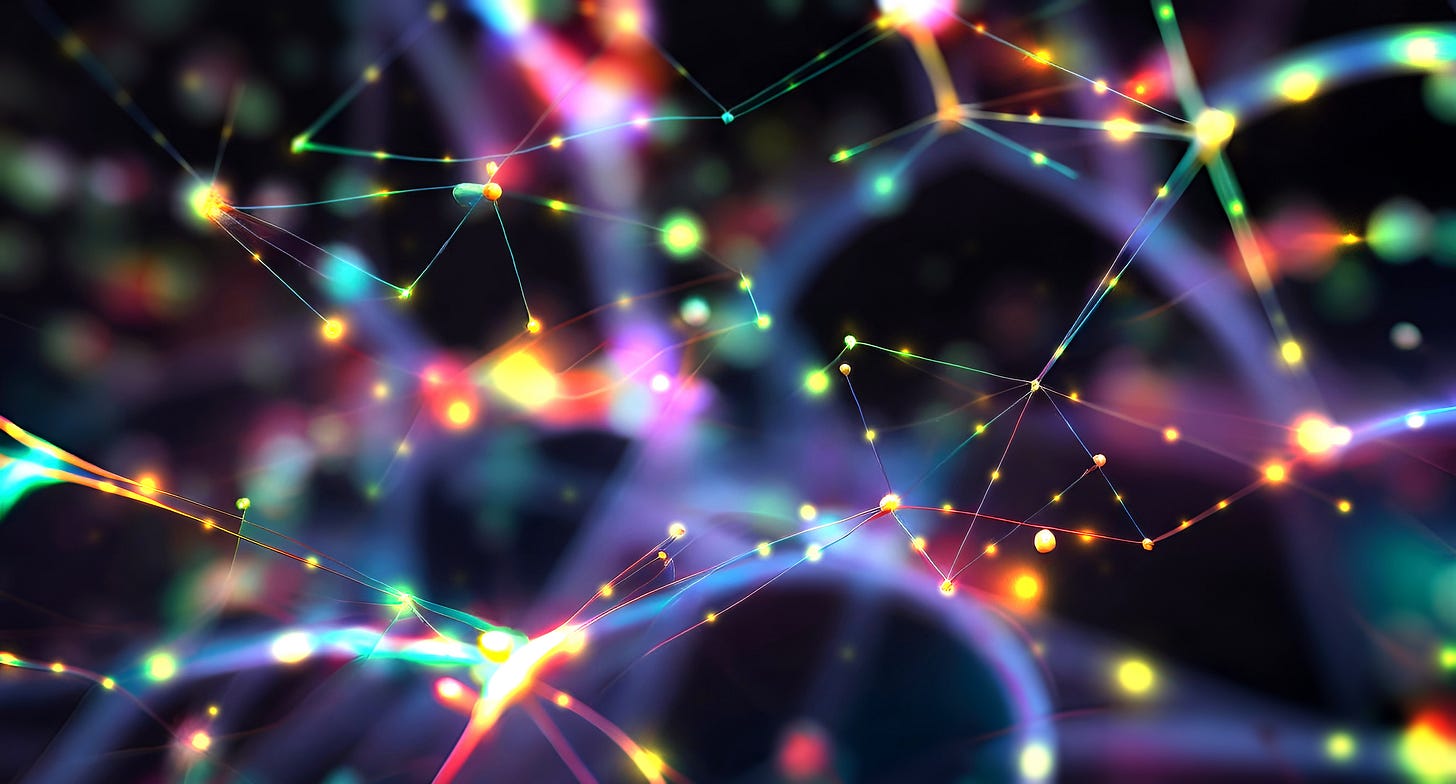

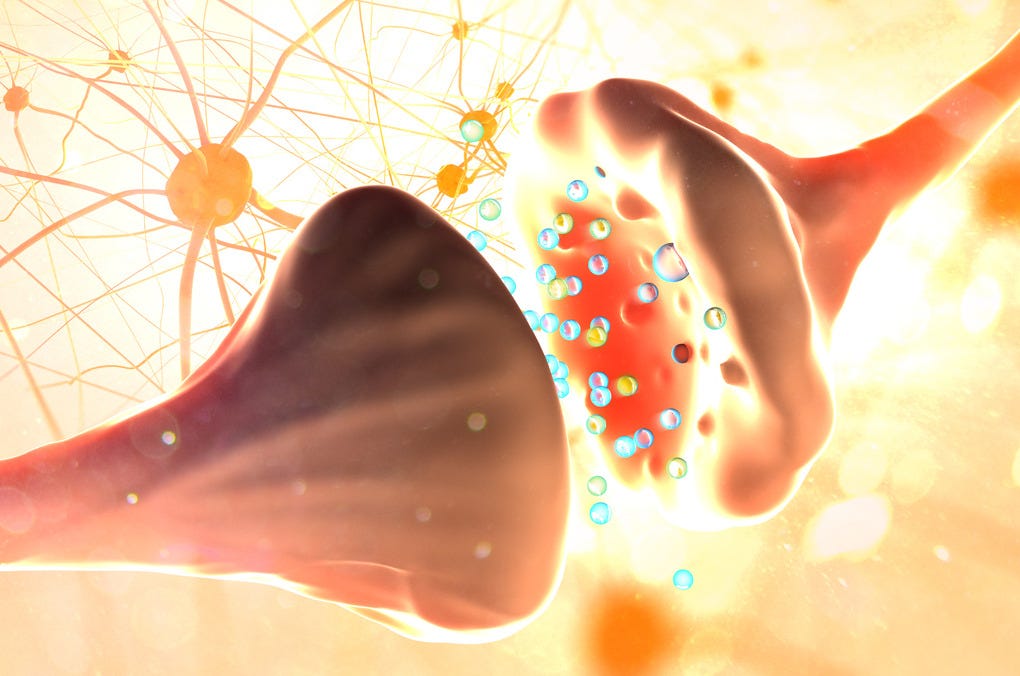


Hi Delia - I knew I subscribed to your Substack for a reason! I'm slowly writing a piece focused on the insidious, systemic costs of advertising, tentatively titled "Not Consumers, but the Consumed: The illusion of agency that tricks us into giving up our real power." If you've no objection, I'll link to this post of yours in that...